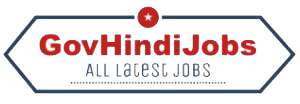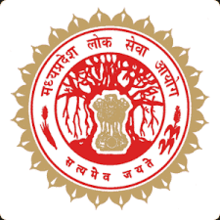Last Updated on मई 10, 2020 by Gov Hindi Jobs
गोवा लोक सेवा आयोग में सह – आचार्य (औषध-निर्माण विज्ञान) पाठ्यक्रम – Goa PSC Associate Professors in Pharmaceutics Syllabus
Syllabus For Computer Based Recruitment Test (CBRT)
For The Post Of Associate Professors In Pharmaceutics Under Goa College Of Pharmacy (Advt. No. 08 Year 2019)
| I. General English including Grammar | 5 marks |
| II. General Knowledge, Current Affairs and Events of National and International Importance | 10 marks |
| III. Logical Reasoning and Analytical Ability | 10 marks |
| IV. Core: | 50 marks |
1. Sustained Release(SR) and Controlled Release (CR) formulations: Introduction & basic concepts, advantages/disadvantages, factors influencing release, Physicochemical & biological approaches for SR/CR formulation, Mechanism of Drug Delivery from SR/CR formulation. Polymers: introduction, definition, classification, properties and Application.
Dosage Forms for Personalized Medicine: Introduction, Definition, Pharmacogenetics, Categories of Patients for Personalized Medicines: Customized drug
delivery systems, Bioelectronic Medicines, 3D printing of pharmaceuticals, Telepharmacy.
2. Rate Controlled Drug Delivery Systems: Principles &Fundamentals, Types, Activation; Modulated Drug Delivery Systems; Mechanically activated, pH activated, Enzyme activated, and Osmotic activated Drug Delivery Systems, Feedback regulated Drug Delivery Systems; Principles & Fundamentals.
3. Drug discovery: stages of drug discovery, lead discovery, identification, validation and diversity of drug targets.
Biological drug targets: Receptors, types, binding and activation, theories of drug receptor interaction, drug receptor interactions, agonists vs antagonists, artificial enzymes.
4. Gastro-Retentive Drug Delivery Systems: Principle, concepts, advantages and disadvantages, Modulation of GI transit time approaches to extend GI transit. Buccal Drug Delivery Systems, :Principle of muco adhesion, advantages and disadvantages, Mechanism of drug permeation, Methods of formulation and its evaluations.
5. Occular Drug Delivery Systems: Barriers of drug permeation, Methods to overcome barriers.
6. Transdermal Drug Delivery Systems: Structure of skin and barriers, Penetration enhancers, Transdermal Drug Delivery Systems, Formulation and evaluation.
7. A) Preformation Concepts – Drug Excipient interactions -different methods, kinetics of stability, Stability testing. Theories of dispersion and pharmaceutical Dispersion (Emulsion and Suspension, SMEDDS) preparation and stability Large and small volume parenteral – physiological and formulation consideration, Manufacturing and evaluation.
b. Optimization techniques in Pharmaceutical Formulation Concept and parameters of optimization, Optimization techniques in pharmaceutical formulation and processing.
Statistical design, Response surface method, Contour designs, Factorial designs and application in formulation.
8. Validation: Introduction to Pharmaceutical Validation, Scope & merits of Validation, Validation and calibration of Master plan, ICH & WHO guidelines for calibration and validation of equipments, Validation of specific dosage form, Types of validation. Government regulation, Manufacturing Process Model, URS, DQ, IQ, OQ & PQ of facilities.
9. cGMP & Industrial Management: Objectives and policies of current good manufacturing practices, layout of buildings, services, equipments and their maintenance Production management: Production organization, materials management, handling and transportation, inventory management and control, production and planning control, Sales forecasting, budget and cost control, industrial and personal relationship. Concept of Total Quality Management.
10. Compression and compaction: Physics of tablet compression, compression, consolidation, effect of friction, distribution of forces, compaction profiles. Solubility.
11. Study of consolidation parameters; Diffusion parameters, Dissolution parameters and Pharmacokinetic parameters, Heckel plots, Similarity factors – f2 and f1, Higuchi and Peppas plot, Linearity Concept of significance, Standard deviation , Chi square test, students T-test , ANOVA test.
12. A) Documentation in Pharmaceutical industry: Master formula record, DMF (Drug Master File), distribution records. Generic drugs product development Introduction, Hatch-Waxman act and amendments, CFR (CODE OF FEDERALREGULATION), drug product performance, in-vitro, ANDA regulatory approval process, NDA approval process, BE and drug product assessment, in –vivo, scale up process approval changes, post marketing surveillance, outsourcing BA and BE to CRO.
B). Regulatory requirement for product approval: API, biologics, novel, therapies obtaining NDA, ANDA for generic drugs ways and means of US registration for foreign drugs
13. CMC, post approval regulatory affairs. Regulation for combination products and medical devices, CTD and ECTD format, industry and FDA liaison. ICH – Guidelines of ICH-Q, S E, M. Regulatory requirements of EU, MHRA, TGA and ROW countries.
14. Non clinical drug development: Global submission of IND, NDA, ANDA. Investigation of medicinal products dossier, dossier (IMPD) and investigator brochure (IB).
15. UV-Visible spectroscopy: Introduction, Theory, Laws, Instrumentation associated with UV-Visible spectroscopy, Choice of solvents and solvent effect and Applications of UVVisible spectroscopy.
16. IR spectroscopy: Theory, Modes of Molecular vibrations, Sample handling, Instrumentation of Dispersive and Fourier – Transform IR Spectrometer, Factors affecting vibrational frequencies and Applications of IR spectroscopy.
17. Chromatography: Principle, apparatus, instrumentation, chromatographic parameters, factors affecting resolution and applications of the following:
a) Paper chromatography b) Thin Layer chromatography c) Ion exchange chromatography d) Column chromatography e) Gas chromatography f) High
Performance Liquid chromatography g) Affinity chromatography
18. X-ray Crystallography: Production of X rays, Different X ray diffraction methods, Bragg‘s law, Rotating crystal technique, X ray powder technique, Types of crystals and applications of X-ray diffraction.
Note:
Duration for C.B.R.T : 75 Minutes
Maximum Marks for C.B.R.T : 75 Marks




